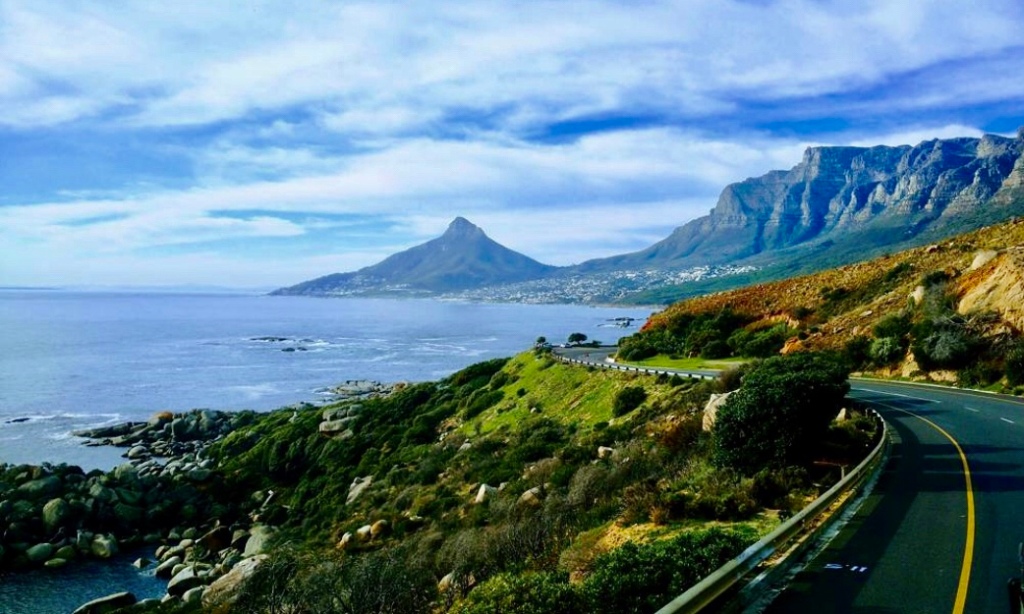From being a strategic port for the Dutch and then the British in the past, to being the driver of South Africa’s tourism industry and being of great importance to the country’s working economy, nestled between the South Atlantic Ocean and the gigantic Table Mountain lies the versatile city of Cape Town. Cape Town is a kaleidoscope of shifting emotions and cultures. The road along the Atlantic coast slowly but surely transitions from the relatively relaxed beaches to the turbulently busy waterfront area as one gradually enters the city centre.
The beauty of Cape Town truly lies within its diversity, from the sprawling beaches of Clifton and Tableview to name a few, to the macabre vibe of Robben Island’s old prison that once held South Africa’s greatest icon in Nelson Mandela, the long-stretching vineyards on the Cape Peninsula and the amalgamation of British, Dutch and South African cultures. Despite the change in scenery associated with different parts of the city, the one thing that remains constant is that you will never lose sight of the mighty Table Mountain, which almost looks upon you like a mother who never loses sight of her child, and it is of no surprise that Cape Town is colloquially known as the Mother City.

Table Mountain itself is one of the most beautiful sights in Africa, and arguably the world. Home to a plethora of species of flora and fauna, the Mountain is one of the reasons that Cape Town has one of the largest biodiversity for an equivalent area in the world. The Table Mountain National Park alone boasts of a higher biodiversity of plants than the entirety of the United Kingdom, a lot of these species are endemic to the Mountain, and are found nowhere else in the world. This has led to Table Mountain receiving the honour of being named a UNESCO World Heritage Site, and rightly so. At the foothills of the Mountain, the Kirstenbosch National Botanical Garden is the prime example of the importance of this protected ecosystem.

Apart from serving a very important ecological purpose, Table Mountain also provides a surreal view of the city, the sea and beyond. A ropeway takes you to the top, where you are greeted by a fleet of inquisitive and equally hungry Rock Hyraxes, these rodents scampering across the top of the mountain looking for food spilled by the spellbound guests who forget about what they’re eating after witnessing the incredible spectacle that beholds them. Don’t try to pet them though, as they do bite! (May or may not be speaking from personal experience here). Sunny weather is obviously the best scenario to be at the top of Table Mountain, but when there is a carpet of clouds below, it makes for the best possible viewing, to see the mountain emerge from a white cloudy curtain, accentuated by the pure sunlight of the day, and makes for a memorable experience.

Away from the more densely populated area of the Western Cape, is the Cape Peninsula, home to one of South Africa’s historic locations, the Cape of Good Hope, which got its name from the hope of opening a sea route to India and the East. Enroute this point, which has often been believed as the meeting point of the Atlantic and Indian Ocean, one can encounter several spots of interest along the Cape Peninsula. One such spot is that of Boulder’s beach, off the little colony of Simon’s Town. Boulder’s Beach is famous for hosting a large colony of African Penguins, and one can take a boardwalk along this beach to view these adorable flightless birds. Another spot on the Cape Peninsula is the harbourfront of Hout Bay, known for its frequent sightings of Seals, resting on the jetties or swimming about the harbour looking for fish to feed upon.

On entering the Cape of Good Hope area, you can experience oceanic views from both sides of a vehicle, with flocks of ostriches in the foreground making their presence known. The location itself is marked by a milestone post, signifying that you are now at the Southernmost tip in Africa, something that has been disproved later, but the signpost still remains. Cape Point lighthouse, once serving a very important purpose of guiding ships around the Cape gives you an endless view of the ocean in three directions. It is however advised to not roam around the Cape of Good Hope with food, as wild Baboons roam around the area, who can and will take every opportunity to snatch your food. On our way back to Cape Town, we took the western route contrary to the Eastern route we took to get to the Cape of Good Hope. The western route is characterised by an expansive stretch of vineyards, with wine being a major industry in South Africa. And before you know it, you’re back along the seaside driving on the same Atlantic coast that takes you to the bustling city, all roads lead to Cape Town as Table Mountain slowly begins to creep into your eyesight once again.

Cape Town is truly amazing. A rich history, an enormous impact on the environment, polar differences of what to see depending on where you are in the city, and what makes the experience even more unforgettable is the blend of it all. It really is, an all in one destination.

Leave a comment